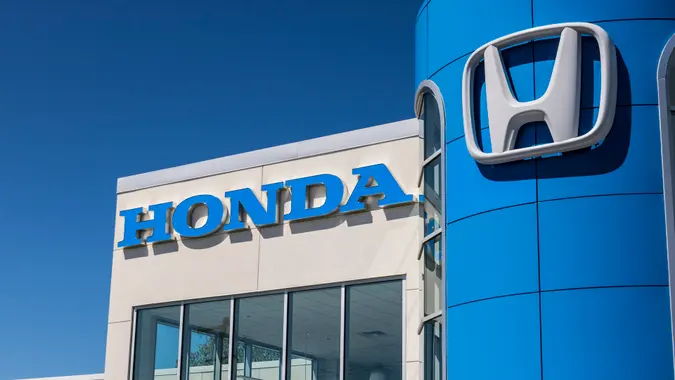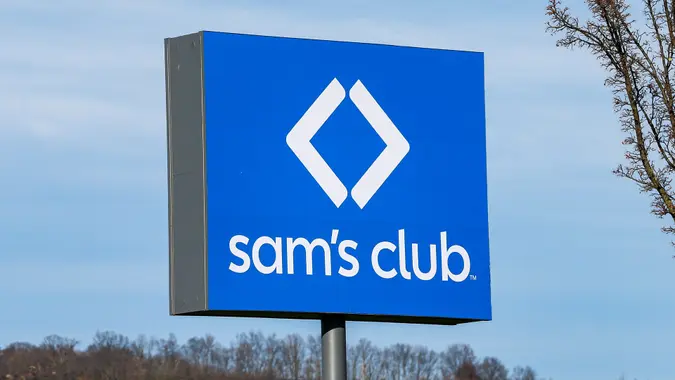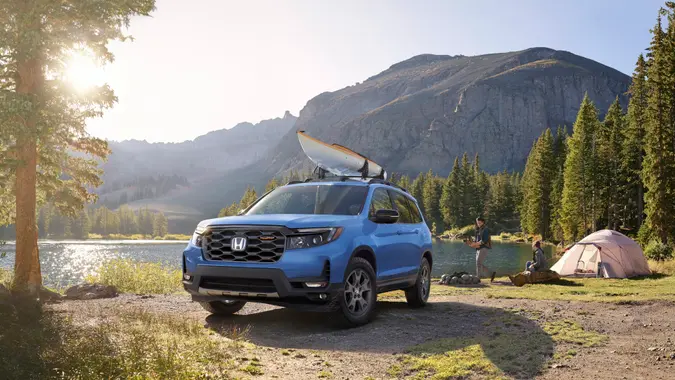I’m a Car Expert: 4 Italian Cars I Would Never Buy and Why They Aren’t Worth It
Commitment to Our Readers
GOBankingRates' editorial team is committed to bringing you unbiased reviews and information. We use data-driven methodologies to evaluate financial products and services - our reviews and ratings are not influenced by advertisers. You can read more about our editorial guidelines and our products and services review methodology.

20 Years
Helping You Live Richer

Reviewed
by Experts

Trusted by
Millions of Readers
Are you interested in purchasing an Italian car? Italian vehicles are known for their luxury feel and attention to detail; however, all cars aren’t made the same.
Here are four Italian cars car experts would never buy, along with why they aren’t worth the price.
Fiat 500L
Despite the unique Italian look and improved blind spot visibility, the Fiat 500L has some major issues, which is why it makes this list.
For one, this Italian vehicle lacks the driver assistance and safety features similar brands have. Also, many Fiat 500L drivers report a choppy ride, touchy brakes and uncomfortable suspension tuning, which are three more reasons why this Italian car isn’t worth it.
Not to mention that Fiat discontinued the 500L back in 2019, which lowers the resale value and increases the difficulty of finding repair parts. The bottom line is that there are plenty of other Italian alternatives to choose from.
“The Fiat 500L is Fiat’s attempt to merge the charm of the Fiat 500 with the practicality of a small family car,” said Blake Shaw, automotive expert at All About Wheels. “Despite its attractive exterior and roomy interior, it fails to meet expectations in key areas.
“A number of people have complained about the 500L’s poor build quality, ungainly handling and weak engine. Reliability has also been a consistent issue, with owners frequently reporting problems with the suspension, electrical system and transmission.”
Maserati Ghibli
Maserati is an Italian luxury car brand known for its comfort and smooth rides. However, the Maserati Ghibli seems to fall short of these expectations.
The first major problem with the Ghibli is the interior design. The window switches are the same as a Jeep Cherokee, lowering the quality and luxury feel.
The next issue is fuel economy. If the Maserati Ghibli isn’t your daily driver, you might not care about fuel economy. Nevertheless, expect an average of around 17 MPG for city driving and 25 MPG for highway cruises.
This isn’t ideal if you are commuting long distances. Other Maserati models, like the Grecale, are a better option for fuel economy, with 22 MPG in the city and 29 MPG on the highway.
“The Ghibli promises luxury but underdelivers,” said Shawn Miller, founder of Modified Rides. “Its interior borrows heavily from cheaper Chrysler models, undermining its premium image. Reliability issues ranging from electronics to suspension plague ownership, and its resale value plummets. Alternatives like the BMW 5 Series or Audi A6 offer far better value and reliability.”
Alfa Romeo Giulia Quadrifoglio
Alfa Romeo offers a sporty car look and athletic handling. The Alfa Romeo Giulia Quadrifoglio is no exception to these benefits; however, this Italian car seems to fall short on reliability, the infotainment system and size. Functionality problems, like engine failures, misfires and rough shifting, have been reported in the Giulia Quadrifoglio.
In addition, the infotainment system is lackluster, with a small screen and limited features. One of the most predominant issues I have with this Italian car is the size. The trunk only provides 13.4 cubic feet of storage, and the back seat feels cramped. If you’re traveling with family members or need to transport items, good luck.
“The Alfa Romeo Giulia is renowned for its sleek design and thrilling performance,” Shaw said. “However, its reliability issues cannot be ignored. Electrical issues, infotainment system glitches, and braking concerns are common complaints from owners.
“The Giulia has received poor marks in reliability surveys compared to its competitors, which could lead to expensive repairs and an unpleasant ownership experience.”
Alfa Romeo Stelvio
Continuing on the Alfa Romeo trend is the Stelvio. Although this model doesn’t have any major functionality problems and excels in safety features, it does fall short on cargo space and technology like the Giulia Quadrifoglio. The rear seat is tight, and cargo space is limited, making it a poor option for long-distance traveling with family members.
Similarly, the Alfa Romeo Stelvio lacks the latest technology features, with a small 8.8-inch touchscreen infotainment system. You’ll have access to basic features, like Apple CarPlay and Android Auto, but you won’t have all of the bells and whistles compared to other Italian luxury car brands.
“Despite having sporty handling and a sleek design that gets people’s attention, this luxury SUV has had some reliability issues,” Blake said. “Owners have reported problems such as inaccurate fuel gauges, braking system malfunctions and occasional engine troubles.”
The Bottom Line
These four cars don’t meet my expectations as an Italian car expert. Other brands and models, like Ferrari, Lamborghini and Bugatti, might be worth looking into if you are interested in purchasing an Italian luxury vehicle.
 Written by
Written by  Edited by
Edited by 

























